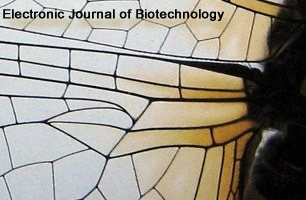Abstract
Background: The behaviour of two biotrickling filters connected in serie (BTF) inoculated with Acidithiobacillus thiooxidans and Thiobacillus thioparus, biodegrading hydrogen sulphide (H2S) and dimethyl sulphide (DMS) simultaneously were studied. A model which considers gas to liquid mass transfer and biooxidation in the biofilm attached to the support is developed. Additionally, a fixed bed biotrickling filter where the microorganism is immobilized in a biofilm which degrades a mixture of H2S and DMS is implemented. Validation of the model was carried out using experimental data obtained at different H2S and DMS loads. Results: The inhibitory effect caused by the presence of H2S on the DMS is observed, which is evidenced by the decrease of the DMS removal efficiency from 80 to 27%, due to the preference that T. thioparus has by simple metabolism. H2S is not affected by the DMS, with removal efficiencies of 95 to 97%, but it decreases at high concentrations of the compound, due to the inhibition of metabolism by high H2S input loads. The model which describes the BFT fits successfully with the experimental results and it has a high sensitivity to inhibition parameters. Conclusions: It is shown that the microorganism has a high affinity for H2S, producing substrate inhibition when the concentration is high. The H2S is able to inhibit the DMS biooxidation, whereas the DMS does not affect the H2S biooxidation.
Upon acceptance of an article by the journal, authors will be asked to transfer the copyright to Electronic Journal of Biotechnology, which is committed to maintain the electronic access to the journal and to administer a policy of fair control and ensure the widest possible dissemination of the information. The author can use the article for academic purposes, stating clearly the following: "Published in Electronic Journal of Biotechnology at DOI:10.2225/volXX-issueX-fulltext-XX".
The Copyright Transfer Agreement must be submitted as a signed scanned copy to biotec@ucv.cl. All authors must send a copy of this document.
